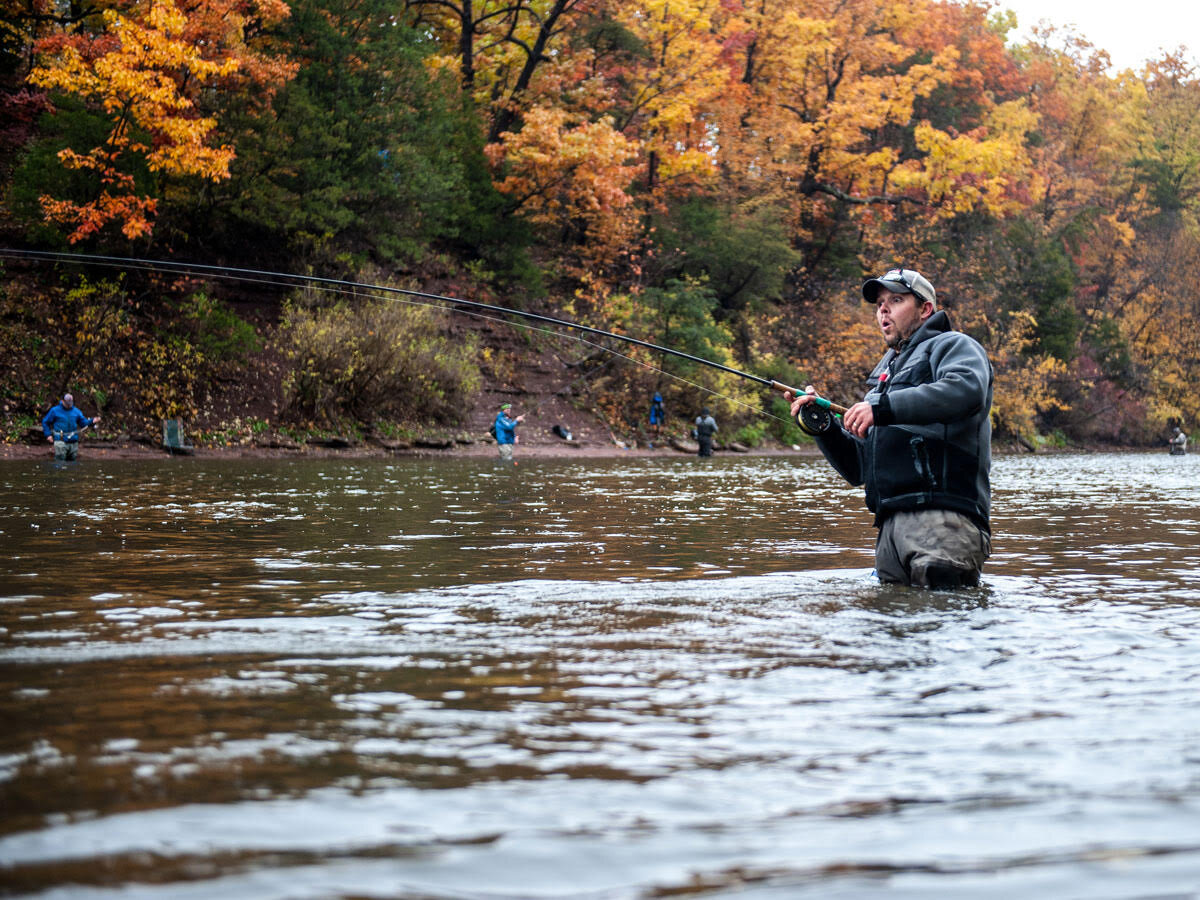Centerpin Basics
evinrude
make your boat better
Centerpin reels are designed to be the ultimate float fishing reels, providing a drag-free presentation for float fishing. Centerpin reels can be compared to fly reels, but are much larger in size. Traditionally, there is no mechanical drag on these reels, allowing the spool to spin freely, creating a natural drift for the bait presentation. Centerpin fishing is also remarkably versatile: you can effectively fish fast-moving runs by focusing your drifts on the seams where the fish are holding, and you can also fish pools where water is moving painfully slow. As long as your rig is equipped with the correct shot pattern, you can fish any area with a very natural presentation.
Joe Dioro from On the Water Magazine has been centerpinning for the past 11 years, getting various questions about the techniques he uses. One of the most frequently asked questions is, “Why does the centerpin work?” His response: it works because it provides a natural drift. A centerpin looks like a large-diameter fly reel, but it has no drag, which allows it to spin freely on its axis (its “center pin”) forward and backward. Centerpin reels do have a clicker, but it is used for transporting the reel, and not for fishing.
A centerpin rod is long, often between 11 and 13 feet in length. This allows the angler to keep as much line on the water as possible, to reduce drag on the rig, and maintain a perfect drift. The rods are also very limber in order to protect the light leaders. The advantage of centerpin fishing is that it creates the most natural presentation possible in moving water by allowing your bait a drag-free drift at the same speed as the river current. Centerpin reels are used with floats and a series of split shots (the “shot line”) leading to the bait. The arrangement of split shots under the float ensures that the bait is the first thing the fish sees, which is extremely helpful with pressured fish, like those in the Great Lakes tributaries.
THE RIG
When centerpinning, your shot line and bobber length are the most important. Depending on whether you are fishing fast or slower water, there are many ways to set up your “shot line” (the length of line where the split shots are attached).
The most common shot pattern is an ascending one where the shots are equally spaced down the leader. Diorio recommends seting up his shot pattern by starting with a swivel from the main line to my 6- or 8-pound-test shot leader. Right under the swivel is the float, then he tapers shots down the leader by dropping the size of each shot so that the smallest shot is at the bottom and right above a second swivel. This is where you attach a 2½ feet of 3- to 5-pound leader, which is then attached to a size 8 or 10 hook (or artificial lure).
There are many different types of baits and lures you can use when centerpinning. Many fishermen believe you can use only bait such as egg sacs, wax worms, nightcrawlers, or minnows, but artificials also work very well underneath a float. Some of the artificial lures Dioro uses include marabou jigs, pink soft-plastic worms, and Berkley Gulp twitch minnows. Nymphs such as stoneflies, Wooly Buggers, Beadhead Caddis Pupas, Beadhead Prince Nymphs, and Beadhead Pheasant Tails are very productive as well. The centerpin drift's effectiveness and the reel’s lack of built-in drag make for exciting moments fighting finicky fish.
Check out the newest season of On the Water Magazine to see these techniques in action, now streaming on Waypoint.








